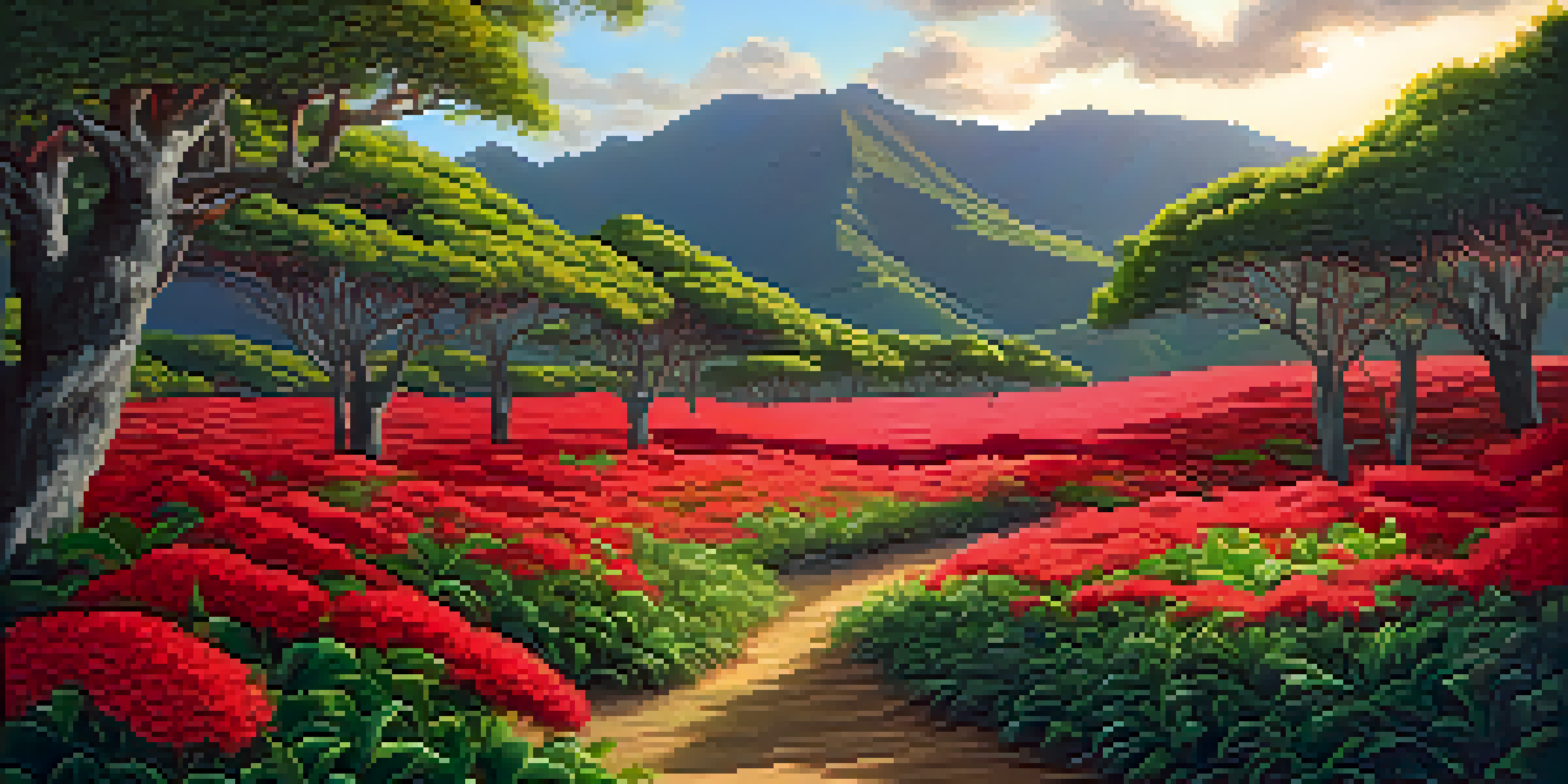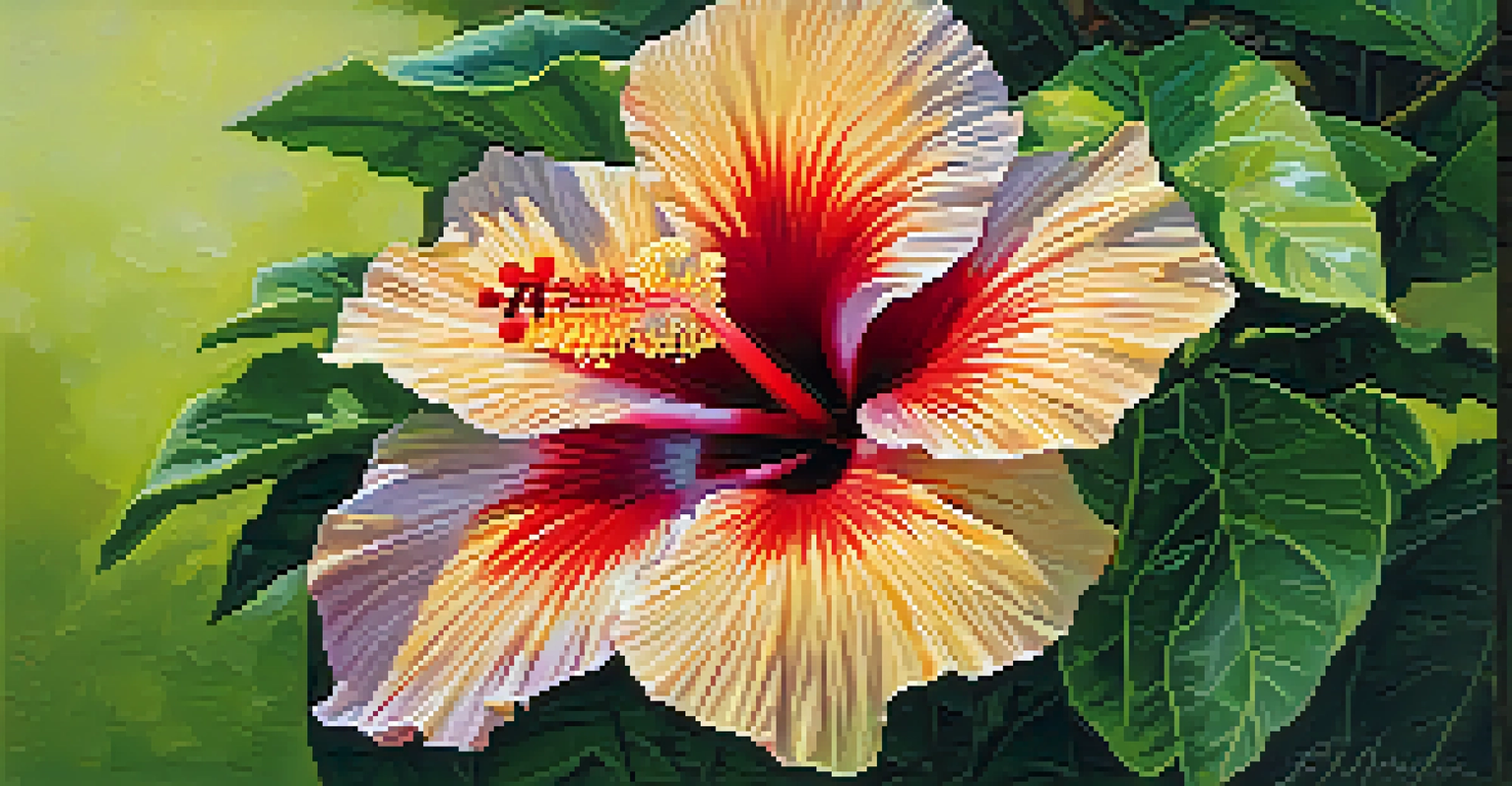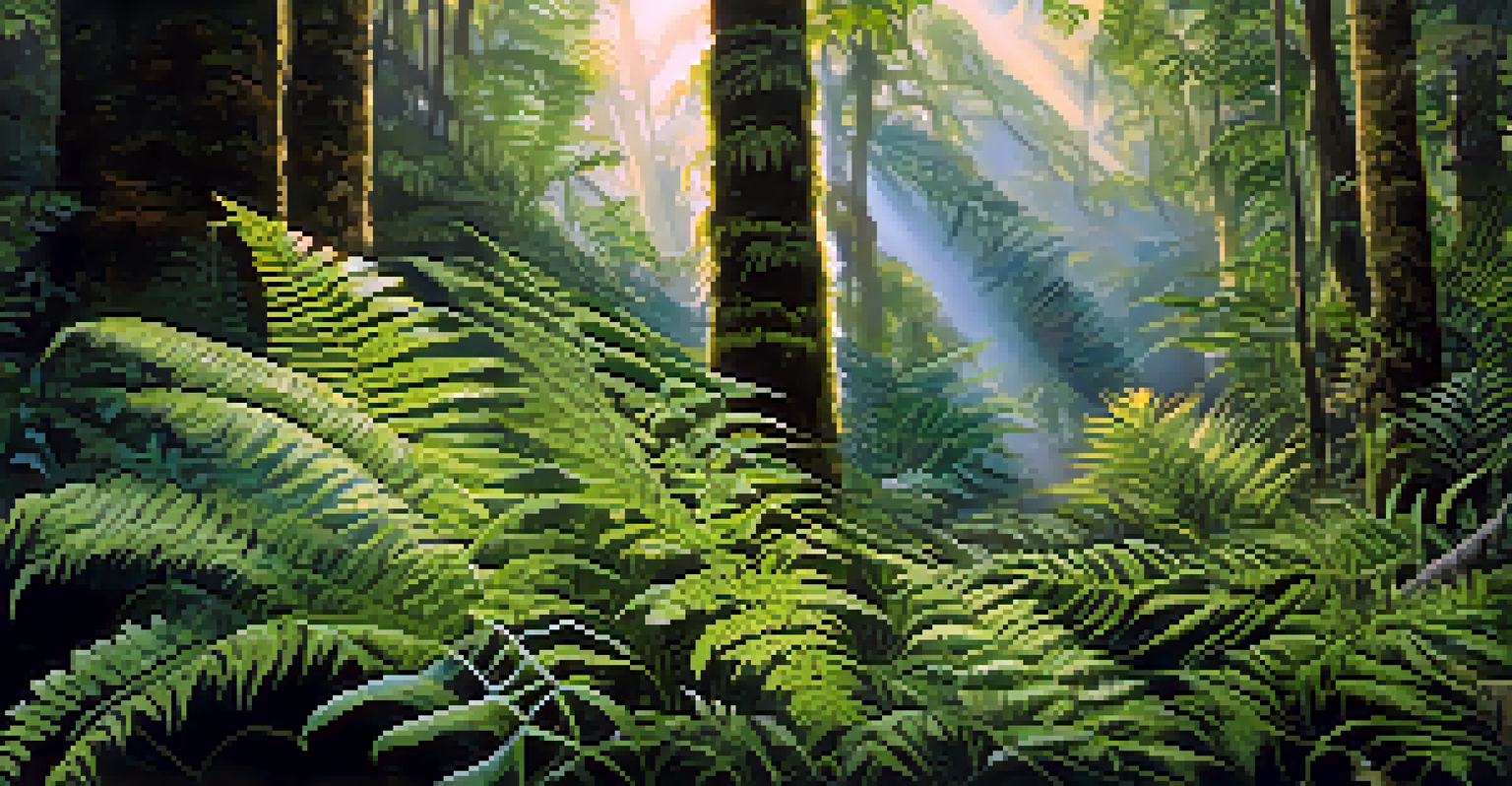Hawaii's Unique Flora: Discovering Native Plant Species

An Introduction to Hawaii's Unique Ecosystem
Hawaii is often referred to as a living laboratory of evolution. With its isolation in the Pacific Ocean, the islands have developed a diverse range of plant species found nowhere else in the world. This unique ecosystem has led to the evolution of plants that are not just beautiful but also vital to the island's ecology.
The preservation of our environment is not a task for the future. It is a task for the present.
From towering trees to delicate flowers, Hawaii's flora has adapted to various climates and terrains, creating a rich tapestry of life. Many of these native species play critical roles in local habitats, supporting everything from birds to insects. Understanding this biodiversity is crucial for conservation efforts.
As we explore Hawaii's native plants, we’ll discover not only their beauty but also their cultural significance to the Hawaiian people. These plants are interwoven with traditions, legends, and practices that highlight the deep connection between the land and its inhabitants.
The Importance of Endemic Species in Hawaii
Endemic species are those that are found exclusively in a specific location. In Hawaii, about 90% of the native plants are endemic, showcasing the islands' unique evolutionary path. This high level of endemism makes Hawaii a hotspot for biodiversity and an essential area for scientific research.

These endemic plants contribute to the islands' ecosystems by providing food and shelter for native wildlife. For instance, the ‘iwi (Hawaiian stilt) relies on certain wetland plants for nesting. When we protect these species, we help maintain the balance of the entire ecosystem.
Hawaii's Unique Endemic Species
Approximately 90% of Hawaii's native plants are endemic, highlighting the islands' distinct biodiversity and evolutionary history.
Moreover, the loss of any native plant species can have a cascading effect on the ecosystem, underscoring the importance of conservation. By understanding and appreciating these plants, we can foster a greater commitment to preserving Hawaii's natural heritage.
Iconic Hawaiian Plants: The Ohia Lehua
One of the most iconic plants in Hawaii is the ‘ōhi‘a lehua, known for its vibrant red flowers. This tree plays a crucial ecological role, as it is often one of the first species to colonize lava flows, helping to create new soil. The ‘ōhi‘a lehua is also culturally significant, featuring prominently in Hawaiian mythology.
Nature does not hurry, yet everything is accomplished.
Beyond its beauty, this tree supports various native birds, including the endangered Hawaiian honeycreeper. The flowers provide nectar, which is a vital food source for these birds. As such, the health of the ‘ōhi‘a lehua is directly linked to the survival of several bird species.
Unfortunately, the ‘ōhi‘a lehua faces threats from invasive species and diseases. Protecting this tree is essential, not just for its ecological role but also for preserving the cultural identity of the Hawaiian people.
Exploring the Beauty of the Hawaiian Hibiscus
The Hawaiian hibiscus, or 'ōhiʻa kukui, is another stunning example of the islands' unique flora. This flower comes in various colors, including red, yellow, and pink, and is celebrated for its large, showy blooms. It’s not just a pretty face; the hibiscus also has medicinal properties and is used in traditional Hawaiian practices.
In addition to its aesthetic appeal, the hibiscus is a key part of the local ecosystem. It attracts pollinators like bees and butterflies, which are essential for the reproduction of many plant species. This interconnectedness highlights the importance of maintaining healthy populations of native plants.
Threats to Native Flora
Invasive species and climate change pose significant threats to Hawaii's native plants, necessitating urgent conservation efforts.
The Hawaiian hibiscus is often seen in gardens and landscapes, symbolizing the islands' natural beauty. However, it’s important to choose native varieties to ensure we support local wildlife and preserve the unique charm of Hawaii’s environment.
The Role of Native Ferns in Hawaiian Ecosystems
Ferns are a prominent feature of Hawaii’s lush landscapes, with over 100 native species thriving in the islands. These plants are among the oldest living species on Earth and have adapted remarkably to Hawaii's diverse habitats. They can be found in rainforests, along coastlines, and even on lava fields.
Native ferns play a crucial role in soil formation and stabilization, helping to prevent erosion in steep terrains. Their ability to thrive in various environments makes them vital to maintaining the health of the ecosystem. Additionally, ferns provide habitat for many small creatures, contributing to the islands' biodiversity.
As we admire the beauty of these ferns, it’s essential to understand their ecological importance. Conserving native fern species helps sustain not just the plants themselves but also the myriad of life forms that depend on them.
The Threat of Invasive Species to Native Plants
Invasive species pose one of the most significant threats to Hawaii's unique flora. These non-native plants can outcompete, harm, or even displace native species, disrupting delicate ecosystems. For example, the introduction of the guava tree has led to significant declines in native plant populations.
The challenges posed by invasive species are compounded by climate change, which can alter habitats and create new opportunities for these invaders. This makes it more crucial than ever to prioritize conservation efforts and restoration projects aimed at protecting native plants.
Cultural Significance of Native Plants
Native plants in Hawaii are deeply intertwined with the culture and traditions of the Hawaiian people, emphasizing the need for their preservation.
Public awareness and action are vital in addressing this issue. By supporting local conservation initiatives and being mindful of garden choices, we can all contribute to preserving Hawaii's incredible plant diversity for future generations.
Conservation Efforts for Hawaii's Native Flora
Conservation efforts in Hawaii are essential to protect the islands' unique flora. Organizations and local communities are working tirelessly to restore native habitats, manage invasive species, and educate the public about the importance of native plants. These initiatives aim to foster a sustainable relationship between people and the environment.
One notable effort is the establishment of native plant nurseries, which propagate endangered species for reintroduction into their natural habitats. These nurseries play a crucial role in ensuring the survival of plants that are at risk of extinction due to habitat loss and invasive species.

By participating in these conservation programs, volunteers can help plant trees, remove invasive species, and spread awareness. Everyone can contribute to the preservation of Hawaii's unique flora, ensuring that future generations can enjoy the beauty and diversity of these native plants.
Embracing Hawaii's Flora: A Call to Action
As we conclude our exploration of Hawaii's unique flora, it’s clear that these native plants are not just a visual delight but also vital to the ecosystem and culture of the islands. Each species plays a role in maintaining the delicate balance of Hawaii's environment. Understanding their importance encourages appreciation and stewardship.
By embracing native plants in our gardens and landscapes, we can contribute to conservation efforts and support local wildlife. Choosing native species not only enhances the beauty of our surroundings but also promotes biodiversity and ecosystem health.
Let's take action together to protect and preserve Hawaii's extraordinary plant life. Whether through supporting local conservation groups, educating ourselves and others, or simply appreciating the natural world around us, every step counts in safeguarding this unique floral heritage.